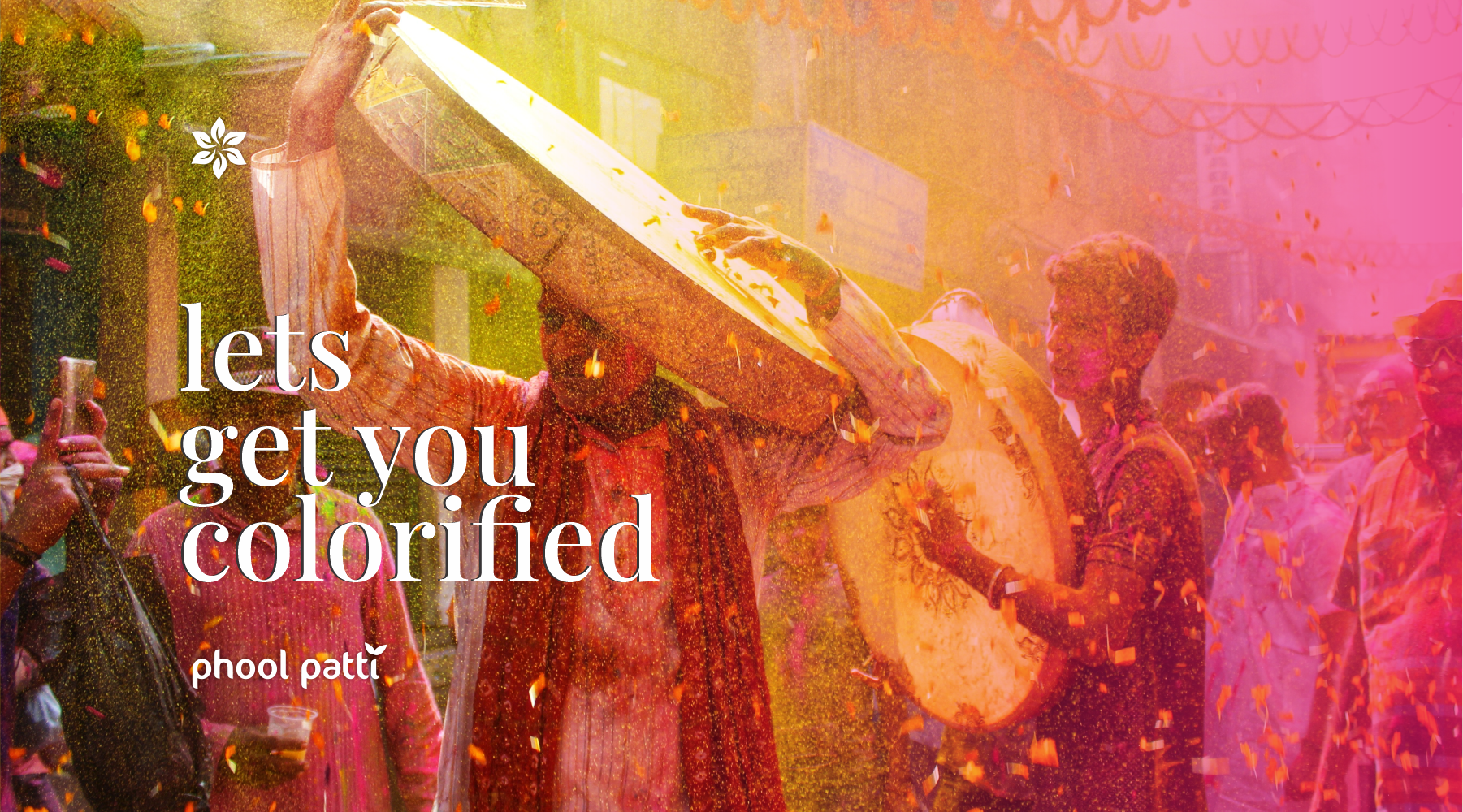Colors Of Spring

When winter bids “Bye-bye” and the incredibly beautiful spring sets in, can Holi be far behind? For those unversed with India, Holi is the unmistakable ‘Festival of Colors’, usually celebrated in the month of March and perfectly timed with spring season. This beautiful festival cuts across religions (it’s a Hindu festival actually), age, gender, demographics, and all other parameters that commonly come to mind. Swathed charmingly in legends and folklore galore, Holi is All About Colors. Period. Not too difficult to imagine why. The hillsides and plains are a wash with blooms, the koel (a type of Indian cuckoo), bulbul (a passerine songbird) and oriole are calling out in haunting notes everywhere, baby mangoes are ripening in trees and birds and animals are pairing up. It is the perfect time to let down your hair, enjoy to the fullest and be thankful for life.
Spring Flowers in the Indian Subcontinent
As spring appears, so do the flowers. As if by some divine magic, the trees break into countless blossoms which add a heady fragrance to the atmosphere. Take a stroll down your neighbourhood lane or go for a jog to the nearby park in the morning and you cannot miss the sight of bunches of color popping out of green branches on trees old and new. So, here are some flowers that appear and add their unmistakable color to the landscape during this time in India –
- Amaltas – A dominant tree in India, Pakistan, and many parts of South-East Asia, it is also known as the Golden Shower tree because of its yellow, drooping flowers. When in full bloom, the tree is so packed with flowers, the leaves are difficult to spot! It is also farmed nowadays as parts of the tree are believed to have medicinal properties, including leaves, seeds, flower, pulp, and bark. Self- medication is strongly discouraged. Take the advice of a qualified Ayurvedic practitioner for use and dosage.
- Gulmohar – You can’t miss the breath-taking beauty of this tree with its burst of red flowers. Also known as the Royal Poinciana, it is a naturalized tree in India with blooms that seem to announce – Folks, it’s Spring- Summer! These hardy trees grow in a variety of soil conditions and have a range of medicinal properties. So, they were used extensively in ancient and folk medicine. Self- medication is strongly discouraged. Take the advice of a qualified Ayurvedic practitioner for use and dosage.
- Jacaranda – A native of South America, this was introduced in India and is known as the Neeli Gulmohar. It continues to grow with its spectacular lavender/ pale purple blooms that flower in spring and continue through summer. It’s a common sight in the avenues of Chandigarh, North India. It has a fresh fragrance when it blooms but turns foul and pungent when stale and decomposing. Said to represent wisdom, rebirth, wealth and good luck, these flowers are beautiful to look at.
- Java Rani – A deciduous tree with brilliant crimson-pink flowers when in bloom, the Java Rani is also known as Pink Shower and Apple Blossom Tree. A charming ornamental tree, it is grown for its showy flowers that peep through green leaves. It has several medicinal and pharmacological uses. Self- medication is strongly discouraged. Take the advice of a qualified Ayurvedic practitioner for use and dosage.
- Jarul - A common sight in West Bengal and Maharashtra, India, around spring- summer, the Jarul has soft, tender flowers ranging from light pink to lilac. It is a deciduous tree with flowers appearing in profuse bunches. Also known as the Pride of India, it prevents soil erosion besides having medicinal properties. Self- medication is strongly discouraged. Take the advice of a qualified Ayurvedic practitioner for use and dosage.
- Nagalinga – A stunning ornamental plant, this is also known as the Cannonball Tree. Commonly found in Tamil Nadu and Puducherry, India, the tree and its flowers require up to 12 hours of sunlight to put up their best show. It is a holy plant in many parts of the country with medicinal value. Self- medication is strongly discouraged. Take the advice of a qualified Ayurvedic practitioner for use and dosage.
- Palaash – Presenting an enthralling sight in places of the Indian subcontinent, the Palaash or Flame of the Forest, appears tall and majestic with its saffron-red flowers when in full bloom. It is a common sight as you drive down the highway in West Bengal, Jharkhand, Bihar, and Odisha. It has a host of uses, including utilization as a form of natural dye. It is also believed to have medicinal properties that include ridding stomach worms. Self- medication is strongly discouraged. Take the advice of a qualified Ayurvedic practitioner for use and dosage.
Play a Safe Holi with Natural Colors from Flowers and Leaves
For years, we played Holi with harsh, chemical colors which created much damage to hair and skin. If you’re child of the 70s and 80s, you will remember reports of serious injuries to eyes and lips of unfortunate Holi revelers every year. There were allergies and mild to serious respiratory concerns of chronic patients. What’s more, it was a pain to rid the epidermis of the often- hideous colors that remained stuck for weeks altogether after the festival was over.
At Phool Patti, we deliberately choose to remind ourselves of the abundance of Mother Earth and the countless ways in which she makes our lives better. “I suggest you switch to better alternatives of Holi colors, those that are organic and safe” says Ruby Walia, Founder- Director of Phool Patti.
“These colors are natural as they are derived from plants and what’s more, you can also make your own colors at home with a little effort,” she adds.
Create Your Own Holi Colors
Do not expect the loud, in-your-eye colors that you may be used to. Remember these will be softer hues as they are 100% natural. They are safe for a youngster’s skin. They’re safe for sensitive skin. They’re safe for super-mature skin. For everyone. So, it makes sense to make the switch now.
1. Red – Use red hibiscus flowers that are commonly available. Dry them thoroughly till crisp or they may rot. Crush and grind into a fine powder. If you like, you may also use red sandalwood which will be expensive but with a lingering perfume. Add corn or rice flour in equal quantity and your color is ready.
2. Yellow – Mix turmeric powder, commonly used in Indian kitchens, with gram or corn flour in 1:2 ratio for dry color. You may also use yellow flowers as marigold or chrysanthemum. Take care to pluck and dry them nicely. Crush and mix in water, a little at a time, for wet color.
3. Blue – Powder blue hibiscus petals after drying and mix with rice/ gram/corn flour for blue gulal (Holi color). For wet color, use crushed and dried jacaranda or blue pea flowers with water.
4. Pink – Beetroots in water. You can’t go wrong with this. Boil the mixture and leave overnight in a cool spot. Use for wet color the next day. For dry powder, use dried rose or rose periwinkle flowers (Nayantara) mixed with Amaranth and corn flour.
5. Green – To get green gulal, use green leafy vegetables as spinach, coriander, mustard leaves with gram or corn flour. To get a liquid color, use the vegetables’ powder diluted with water.
6. Orange – Use Palaash or Henna (Mehendi) for making orange colour. Dry the petals of Palaash and leaves of Henna and grind to make a fine powder. Next, add gram or corn flour to it and mix well. Mix dry crushed Henna leaves with water, stir and leave for a while for the orange color to appear.
Phool Patti wishes you and your loved ones a Happy and Colorful Holi.
0 comments




